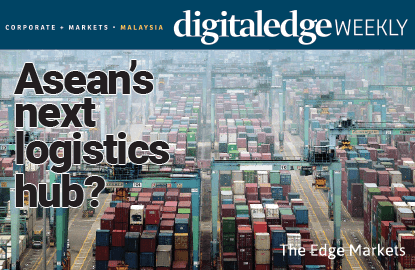

KUALA LUMPUR (Sept 12): Singapore, oh Singapore - the little Southeast Asian island state is known near and far as a logistics hub to this part of the world, a position which it wrestled from the neighbouring peninsula's Malacca and Penang ports a couple of centuries ago and which it has retained with aplomb thus far.
But lack of space is proving to be a major problem for expansion on the island - recognised as the undisputed Asean logistics hub now - even though it has been aggressively reclaiming land to cater for its growing population and industrial needs.
There is, after all, only so much you can expand before you start encroaching on others' territories.
And right across the Causeway is Malaysia, which is sandwiched snugly between two of the most important shipping routes in Asia and also has all the right ingredients of becoming a logistics hub for the region.
"A lot of people who wanted to set up distribution centres used to do it in Singapore. However, we are seeing more people come to Malaysia's ports because Singapore is running out of land," Westports Holdings Bhd chief executive officer Ruben Emir Gnanalingam told the digitaledge Weekly.
Does this mean that as Singapore runs out of space, Malaysia is the next best thing and possibly the next Asean hub? That is the question that the business magazine in its Sept 14-Sept 20 edition published today, explores in its cover story titled 'Asean's next logistics hub?' this week.
As it is, Malaysia is ranked second in Southeast Asia in terms of logistics connectivity, right after Singapore, in the World Bank's Logistics Performance Index 2014.
Malaysia's Third Industrial Master Plan (2006-2020) has projected marine cargo handled by the country ports will jump threefold from 252.6 million tonnes in 2005 to 751 million tonnes in 2020, the weekly noted.
A major strength that is already making the country stand out as a key logistics link in Asia, it said, is its status as a regional office and manufacturing base for multinationals like Western Digital, Seagate, Microsoft, IBM, Siemens and more.
But there's also 'the China factor', which is primarily its One Belt, One Road blueprint. How will that influence the development of logistics in this part of the world?
What about that basic but persistent road congestion problem in Malaysia - especially in that last mile to Port Klang? How will such a seemingly simple but perennial problem, influence Malaysia's suitability or attractiveness as the next best choice after Singapore?
And after all that's said and done - what can investors take note of? Which companies, if any, are worth looking at – especially given the volatility in the equities market this year – in view of such logistical developments in the region?
Of course, when one talks about the movement or the facilitation of the movement of goods, one aspect not to be left out is the e-commerce boom in recent years, which have lured not just bankers but also telecommunication giants to come out and play.
These are the issues – and the opportunities – that the latest weekly story seek to discuss. To find out more - get your copy of the digitaledge Weekly at subscribe.theedgemarkets.com.
P/S: It can also be downloaded from Apple’s Newsstand and Androids’ Google Play.